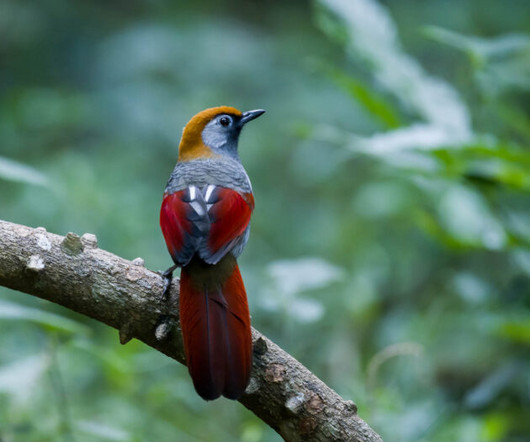Birding Hongbenghe, Yunnan (Part 1)
10,000 Birds
MARCH 11, 2024
This laughingthrush is a cooperative breeder – nestlings are fed by all members of a group, often 6-12 (not just 2 as in Wham!): “A female may share a nest with another, and 3 or more adults may take turns incubating the eggs and feeding the chicks.” ” ( source ).












Let's personalize your content